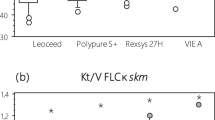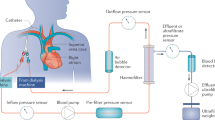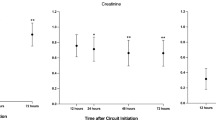Abstract
Background
Acute kidney injury is a cause of preventable deaths in low resource settings due to lack of dialysis access and cost. A manual single lumen alternating micro-batch (mSLAMB) dialysis technique performs kidney replacement therapy using single lumen access, low-cost bags/tubing, intravenous fluids, and a filter without electricity, a battery, or a pump. We propose a protocol whereby mSLAMB can perform diffusive clearance simply and efficiently to bring dialysis to underserved populations.
Methods
Expired packed red blood cells mixed with crystalloid solution were spiked with urea and anticoagulated with heparin. A Static diffusion Technique (with short flushes of fluid before each filter pass) was compared to a Dynamic diffusion Technique (with fluid running through the filter during the forward pass) to assess urea and potassium clearance. Passive ultrafiltration was the difference between the 200 mL batch volume and volume returned to the blood bag per cycle.
Results
Five cycles achieved urea reduction ratios (URR) between 17–67% and potassium clearance of 18–60%, with higher percentages achieved from higher proportions of batch volume dialyzed to patient volume. Dynamic Technique increased clearance over the Static Technique. Passive ultrafiltration volumes were 2.5–10% of batch volume.
Conclusion
mSLAMB dialysis performs diffusive clearance and passive ultrafiltration efficiently, while preserving resources and available manpower.
Impact
-
mSLAMB is a dialysis technique that can perform efficient diffusive clearance and passive ultrafiltration without electricity, batteries, or a pump.
-
With basic medical supplies and limited manpower, mSLAMB is a cost-effective means of providing emergency dialysis in low resource areas.
-
We propose a basic algorithm for safe and cost-effective dialysis for people of different ages and sizes.
This is a preview of subscription content, access via your institution
Access options
Subscribe to this journal
Receive 14 print issues and online access
$259.00 per year
only $18.50 per issue
Buy this article
- Purchase on Springer Link
- Instant access to full article PDF
Prices may be subject to local taxes which are calculated during checkout




Similar content being viewed by others
Data availability
All data generated or analyzed during this study are available from the corresponding author who will gladly make available all data on reasonable request.
References
Mehta, R. L. et al. International Society of Nephrology’s 0by25 initiative for acute kidney injury (zero preventable deaths by 2025): a human rights case for nephrology. Lancet 385, 2616–2643 (2015).
Olowu, W. A. et al. Outcomes of acute kidney injury in children and adults in sub-Saharan Africa: a systematic review. Lancet Glob. Health 4, e242–e250 (2016).
Kilonzo, K. G., Akrabi, H. F. & Yeates, K. E. Cost-effectiveness of acute peritoneal dialysis: considerations from Africa. Clin. Nephrol. 93, 72–75 (2020).
Chawla, L. S. Single lumen alternating micro-batch hemodiafiltration (SLAMB-HDF): a device for minimally invasive renal replacement therapy. Kidney360 1, 969–973 (2020).
Chawla, A. K. et al. Manual single-lumen alternating micro-batch device as renal replacement therapy in Austere environments. Blood Purif. 1–9 (2022) https://doi.org/10.1159/000527724.
Acknowledgements
We thank Dr. Lakhmir Chawla for his editorial assistance in the development of this manuscript. mSLAMB kits and dialyzers were donated by Stavro Medical, Inc.
Author information
Authors and Affiliations
Contributions
G.C., A.K.C., J.M., and D.C.H. all conceived, designed, and performed experiments and data acquisition. G.C. and D.C.H. performed data analysis, interpretation, and were primary manuscript authors. J.R. performed laboratory techniques that allowed for data acquisition. S.L.G. provided critical article drafting and editing.
Corresponding author
Ethics declarations
Competing interests
S.L.G. reports receiving personal fees from Baxter Healthcare, BioPorto Inc., Nuwellis, Fresenius, MediBeacon, and Medtronic. J.M. is a consultant for Medtronic.
Additional information
Publisher’s note Springer Nature remains neutral with regard to jurisdictional claims in published maps and institutional affiliations.
Supplementary information
Rights and permissions
Springer Nature or its licensor (e.g. a society or other partner) holds exclusive rights to this article under a publishing agreement with the author(s) or other rightsholder(s); author self-archiving of the accepted manuscript version of this article is solely governed by the terms of such publishing agreement and applicable law.
About this article
Cite this article
Ceschia, G., Chawla, A.K., Morgan, J. et al. Manual single lumen alternating micro-batch dialysis achieves reliable clearance via diffusion. Pediatr Res 94, 1335–1340 (2023). https://doi.org/10.1038/s41390-023-02636-9
Received:
Revised:
Accepted:
Published:
Issue Date:
DOI: https://doi.org/10.1038/s41390-023-02636-9



